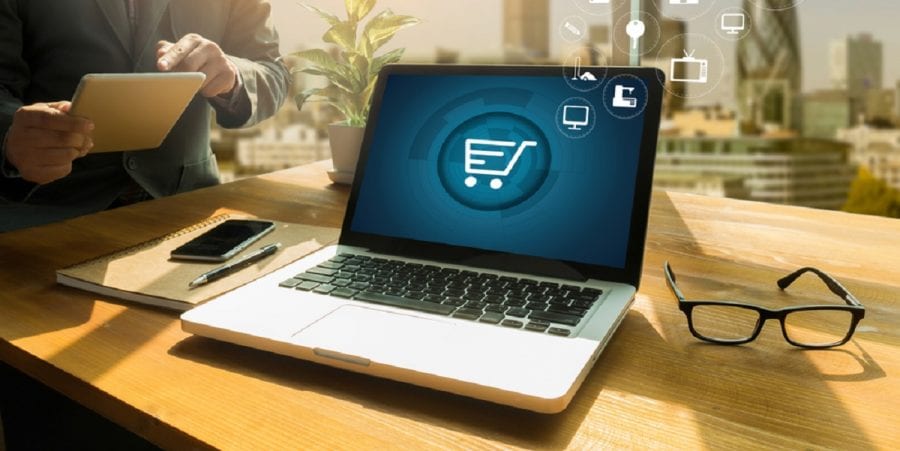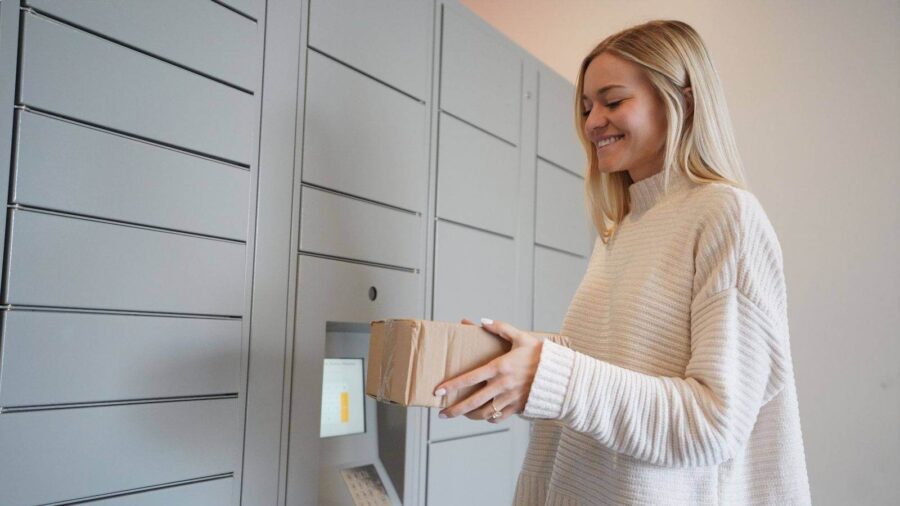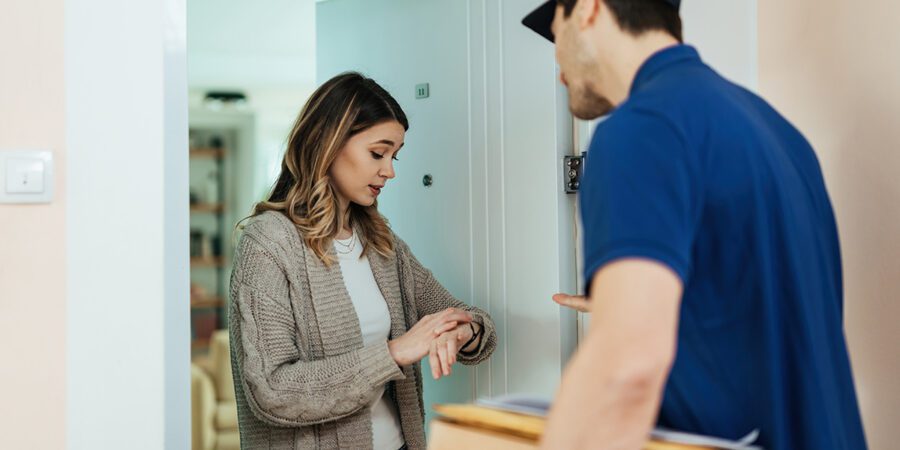
Multifamily
Five E-Commerce Trends: What’s Hot and What’s Not in 2021
Written by: Parcel Pending
8 Min Read
Published: December 18, 2020
Updated: March 29, 2023
| What’s Hot | What’s Not |
| Buying from Direct-to-Consumer Brands | Shopping for Boutique Brands via Mega Retailers |
| Omnichannel Retailing | Distinct Retail Channels |
| Buy Online, Pick Up In-Store (BOPIS) | Shopping In-Store |
| Same-Day Delivery | Waiting for Carrier Packages |
| Targeted Messages via Personalization | Mass Emails and Texts |
Even though a vaccine is rolling out worldwide, it won’t slow down the runaway e-commerce train as it continues to shake up retailing. Black Friday rang up e-commerce sales of $9 billion and Cyber Monday bested that number with $9.4 billion according to Adobe1,2. Overall, US e-commerce sales will reach $794.50 billion this year, up 32.4% vs. a year ago3. These numbers are expected to continue to grow as the customer experience improves and mobile shopping becomes the preferred experience.
As you navigate 2021, here are our five eCommerce predictions to consider:
-
Niche Brands Exploding Into Giant Direct-to-Consumer Behemoths
Online sellers Zappos, Casper, and Peloton were all initially challenged for believing that consumers would buy shoes, beds, or bikes without ever trying them on for size. The late Tony Hsieh, who turned Zappos into a mega million-dollar brand and sold it to Amazon for $1.2 billion knew that overcoming this objection was paramount4. With free shipping, returns, and outstanding customer service, he built an e-commerce empire of raving fans.
-
Blurring the Lines Between Online and In-Store
A long-time holdout on the eCommerce business has been TJX Cos., parent of Marshalls, HomeGoods, and T.J. Maxx. After years of only offering e-gift cards, the pandemic has forced the “treasure hunter” of retailers to introduce e-commerce in 20215. This shift is an about-face for the $10.1 billion retailer as its chief Executive Ernie Herrman stated in June of 2020, “We will not look to e-commerce as our major leveraging point to get us through Covid and out the other side.”6
As retailers enter e-commerce, online retailers have expanded into physical stores. The reason for the expansion is simple: a “halo effect”. ICSC reports that 88% of consumers prefer to shop with retailers who have both brick-and-mortar locations and an online presence7. When both shopping experience options are available, it pays off. Customers prefer the convenience of online shopping and the ability to easily make returns or exchanges at a physical store – showing the necessity of both sales channels individually and the omnichannel retail strategy overall. Looking at total retail sales can be misleading; it is important to review individual sales across all platforms to determine how online sales and other sales platforms are performing for your business.
These considerations are why consumer giant behemoths have gobbled up direct-to-consumer brands, placing them on retailers’ shelves where they garner significantly more visibility than living only in the online universe. Unilever paid $1 billion for Dollar Shave Club in 2016, P&G notably purchased Native Deodorant that same year, and Schick purchased razor maker Harry’s in 2019.
Target is taking a major leap into direct-to-consumer brands. It not only is investing in online brands ($70 million in Casper) but also creating innovative partnerships with them8. Its deal with Quip, for example, allows for the starter pack of electric toothbrushes to be sold at the retailer. Replacement heads, on the other hand, are directed to Quip.com where consumers sign up for an automatic refill subscription. Target, cleverly enough, gets a percentage of each transaction.
The power of first-party data arms direct online retailers with enormous negotiating power. When Harry’s was working on its distribution deal with Target, it insisted that the big box retailer devote an entire branded section for the brand versus being interspersed throughout the personal care aisles. Within six months of the roll-out, Harry’s accounted for more than 50% of razor sales9. Today, both brands share consumer behavior data from in-store, subscription, and online purchases.
-
The Growth of Buy Online, Pick Up In-Store (BOPIS)
You know Buy Online, Pick Up In-Store (BOPIS) has become mainstream when morning TV shows start using the acronym. The statistics tell the story: 62% of consumers said they are embracing BOPIS as a way to avoid contracting COVID-19, while 87% of consumers queried by Shekel said they preferred shopping experience options like BOPIS and curbside pickup to shopping in-store10,11. By 2021, it’s expected that 90% of retailers will offer BOPIS12. (Curbside meaning that customers can arrive curbside and have a package brought out to their vehicle).
In tandem with BOPIS is the need for automated lockers. Parcel Pending, a market leader which recently partnered with Lowe’s to install smart lockers at its 1,700 stores, recognizes why retailers have fallen in love with BOPIS: it solves the “last-mile” delivery problem by creating an additional fulfillment option for customers, lowers delivery costs, and cements customer loyalty while also lifting sales; a whopping 61% of all customers make an additional purchase when retrieving their orders13.
-
Demand for Same- Day Delivery
Order fulfillment is, of course, emerging as a challenge for retailers. Consumers are demanding faster delivery and are willing to pay for it. A recent survey by PWC found 41% of consumers are willing to pay a charge for same-day delivery while nearly a quarter (24%) of shoppers said they would pay more to receive packages within a one-or two-hour window of their choosing14. Further, same-day delivery is expected to grow 22% through 2024 aided by local restaurants, grocers, and retailers15.
Same-day delivery can be a benefit to eCommerce companies with this eye-opening fact: 82% of consumers in the U.S. were willing to purchase more items to take advantage of a minimum spending ‘free delivery’ option16.
What does it mean when your order is in fulfillment? The process of moving products from the origin facility to the customer’s home or to the store for pick-up is the process of fulfillment.
Researchers in November 2020 estimated that 38.7 million shoppers placed at least one online grocery order for delivery or pickup order during the preceding 30 days, up 3.6% from 37.5 million in August17. Target saw this growing opportunity for same-day delivery and purchased Shipt in late 2017 for $550 million18. Target sales fulfilled by Shipt more than tripled in the second quarter year-over-year19. Same-day delivery adds an incentive for online shoppers to purchase immediately rather than wait for their next online shopping spree.
-
More Marketing Messages, More Personalized Messages
The e-commerce market is changing with the shift away from third-party data collection, privacy laws, and the elimination of Apple’s Identifier for Advertisers (IDFA). However, the need for data, especially in retail persists.
80% of consumers surveyed by Epsilon and GBH Insights demand personalized marketing messages and the payoff is there for savvy retailers who create high levels of customer satisfaction20. Happy customers boast a 10-15% higher sales in conversion rate and higher loyalty.
That means first-party data is paramount for eCommerce personalization. Based on shopping history, reviews, and open-rates, retailers must create relevant and personalized product suggestions and marketing communications. The hard part? Investing in artificial intelligence, digital marketing strategies, and customized relationship management platforms that go beyond dividing customers simply by demographics.
Experts recommend a careful “retargeting” strategy balancing the need to remind a web visitor who didn’t purchase with a targeted ad while also incentivizing a purchase in a way that doesn’t feel creepy. For example, if a customer didn’t purchase a blouse, she may see that blouse “follow” her across the web. Mobile devices make it easier than ever for consumers to shop online and social commerce (social media app connections) can help bring new products to target customers’ social feeds.
Smart retailers are also implementing recommendations based on past purchases. Nordstrom.com issues recommendations that are complementary to their purchase; for example, highlighting gloves to customers who just purchased a coat. McKinsey & Company illustrates how ProFlowers harnesses past purchases by sending a reminder with “do you want to order flowers again for your anniversary?”21
Whereas the “old school” of advertising (TV and radio) meant one-way communication, today the goal is interaction, differentiation, engagement, and sales.
The bottom line is that the e-commerce landscape has permanently changed. Whereas marketers might have thought these shopping shifts were a temporary response to COVID, it’s clear that they are here to stay. Now is the time to harness the power of these trends to succeed in 2021.
Interested in boosting your omnichannel retail experience in 2021? Learn more about our retail parcel locker solutions here.
Sources:
- Durbin, Dee-Ann. Business Insider. US consumers spent a record $9 billion on Black Friday online shopping. (2020, November 29). https://www.businessinsider.com/black-friday-sees-record-online-as-us-shoppers-stay-home-2020-11.
- Lucas, Amelia. CNBC. Cyber Monday online sales hit record $9.4 billion, boosted by late-night spending spree, Adobe says. (2020, December 3). https://www.cnbc.com/2019/12/03/cyber-monday-online-sales-hit-record-9point4-billion-adobe-says.html.
- eMarketer. US Ecommerce Growth Jumps to More Than 30%, Accelerating Online Shopping by Nearly 2 Years. (2020, October 12). https://www.emarketer.com/content/us-ecommerce-growth-jumps-more-than-30-accelerating-online-shopping-shift-by-nearly-2-years.
- Hagerty, James R. The Wall Street Journal. Former Zappos Chief Tony Hsieh Exalted Customer Service, Set High Bar for Rivals. (2020, November 29). https://www.wsj.com/articles/former-zappos-chief-exalted-customer-service-and-set-high-bar-for-rivals-11606687557.
- PYMNTS. TJX To Add eCommerce To HomeGoods Site Amid Lagging Physical Sales. (2020, November 18). https://www.pymnts.com/news/retail/2020/tjx-to-add-ecommerce-to-homegoods-site.
- Kapner, Suzanne & Nassauer, Sarah. The Wall Street Journal. Coronavirus Changed Everything. Except T.J. Maxx. (2020, June 22). https://www.wsj.com/articles/coronavirus-changed-everything-except-t-j-maxx-11592818200?mod=article_inline.
- International Council of Shopping Centers. (2018). The Halo Effect [Report]. Retrieved from: https://www.icsc.com/thehaloeffectii
- Milnes, Hilary. Digiday. How Target is getting more DTC brands to sell in its stores. (2019, March 14). https://digiday.com/retail/target-getting-dtc-brands-sell-stores/.
- Terlep, Sharon. The Wall Street Journal. Big Brands, Online Startups Find Success Rests on Store Shelves. (2019, December 9). https://www.wsj.com/articles/big-brands-online-startups-find-success-rests-on-store-shelves-11575895927.
- E-Complish. E-Commerce Trends to Watch in 2020 and Beyond. (2020, September 10). https://www.e-complish.com/blogs/e-commerce-trends-to-watch-in-2020-and-beyond/.
- Shekel. (2020, April 7). 87% of Shoppers Prefer to Shop in Stores With Touchless or Robust Self-Checkout Options During COVID-19 Pandemic [Press release]. Retrieved from: https://www.businesswire.com/portal/site/home/news/
- Retail TouchPoints. 90% of Retailers Plan To Implement BOPIS By 2021. (n.d.). https://retailtouchpoints.com/resources/90-of-retailers-plan-to-implement-bopis-by-2021.
- Parcel Pending by Quadient. How BOPIS Lockers Can Help Retailers Succeed. (2020, April 1). https://www.parcelpending.com/en-us/blog/how-bopis-lockers-can-help-retailers-succeed/.
- Barr, Steven J. & Ozturk, Oz. PWC. The consumer transformed: Global Consumer Insights Survey 2020. (n.d.). https://www.pwc.com/gx/en/industries/consumer-markets/consumer-insights-survey.html.
- Technavio. (2020, July 30). COVID-19 Impacts: Same-Day Delivery Market in U.S. Will Accelerate at a CAGR of About 22% Through 2020-2024 | Growing B2C E-Commerce Market in US to Boost Growth [Press Release]. Retrieved from: https://www.technavio.com/newsroom
- Romaine, Ed. Conveyco. 15 Statistics that Show the Importance of Same-Day Delivery. (2020, November 17). https://www.conveyco.com/delivery-statistics/.
- Melton, James. Digital Commerce 360. US consumers made almost 63 million online grocery orders in November. (2020, December 10). https://www.digitalcommerce360.com/article/coronavirus-impact-online-retail/.
- Target. (2017, December 13). Target to Acquire Same-Day Delivery Platform Shipt, Inc. to Bolster Fulfillment Capabilities [Press Release]. Retrieved from: https://corporate.target.com/press
- Repko, Melissa. CNBC. Target’s same-day delivery service Shipt gears up for online holiday shopping boom. (2020, November 10). https://www.cnbc.com/2020/11/10/targets-online-delivery-service-shipt-gears-up-for-q4-shopping-boom.html.
- Lindecrantz, Erik, et al. McKinsey & Company. Personalizing the customer experience: Driving differentiation in retail. (2020, April 28). https://www.mckinsey.com/industries/retail/our-insights/personalizing-the-customer-experience-driving-differentiation-in-retail.
- Boudet, Julien, et al. McKinsey & Company. What shoppers really want from personalized marketing. (2017, October 23). https://www.mckinsey.com/business-functions/marketing-and-sales/our-insights/what-shoppers-really-want-from-personalized-marketing.



